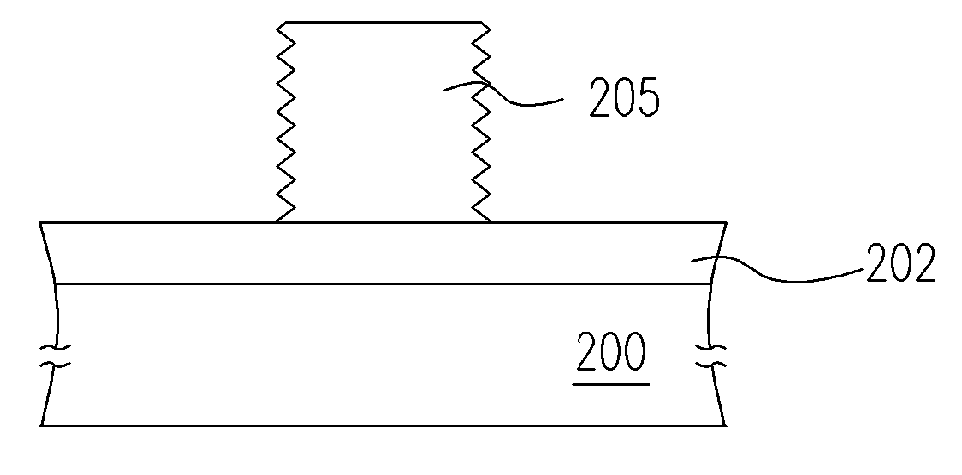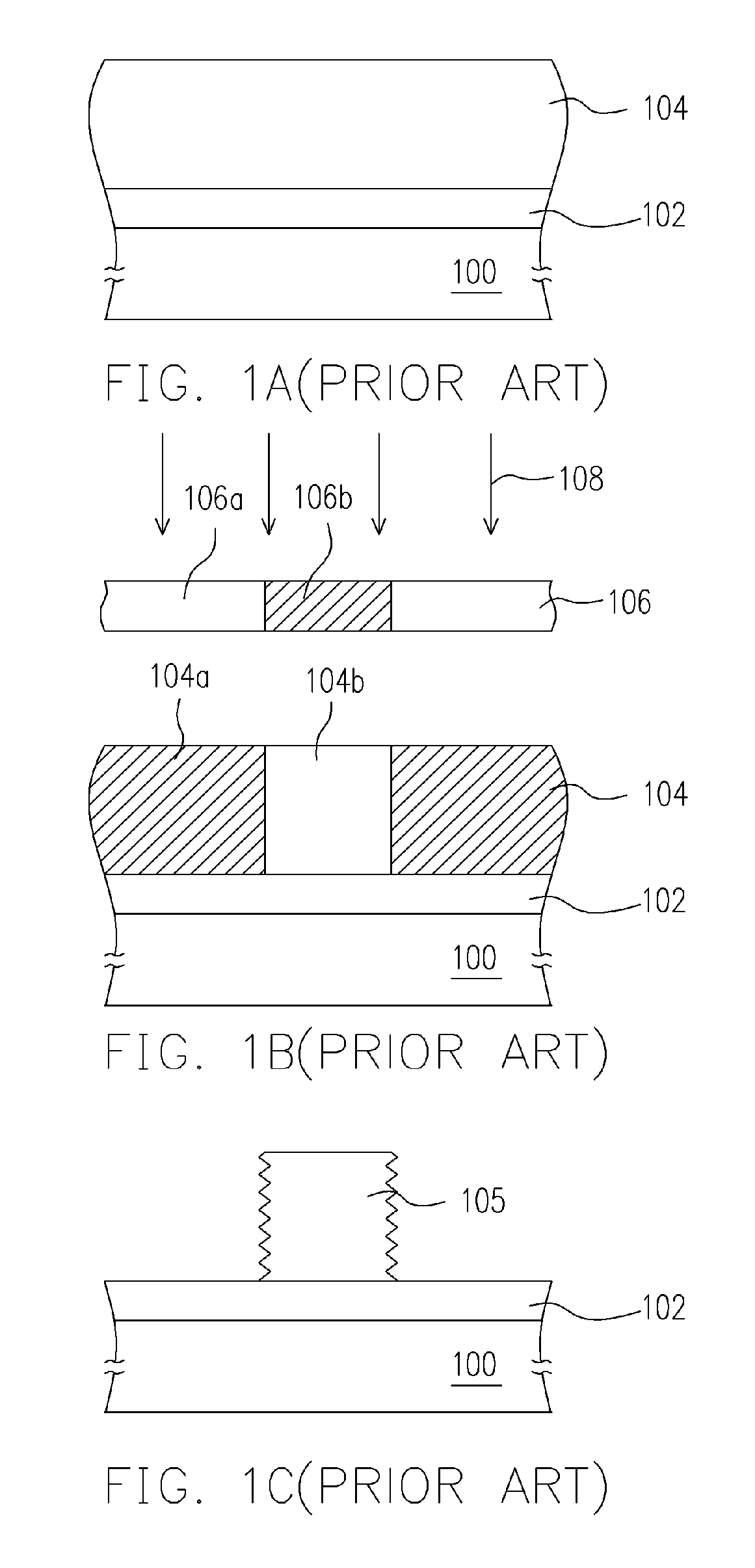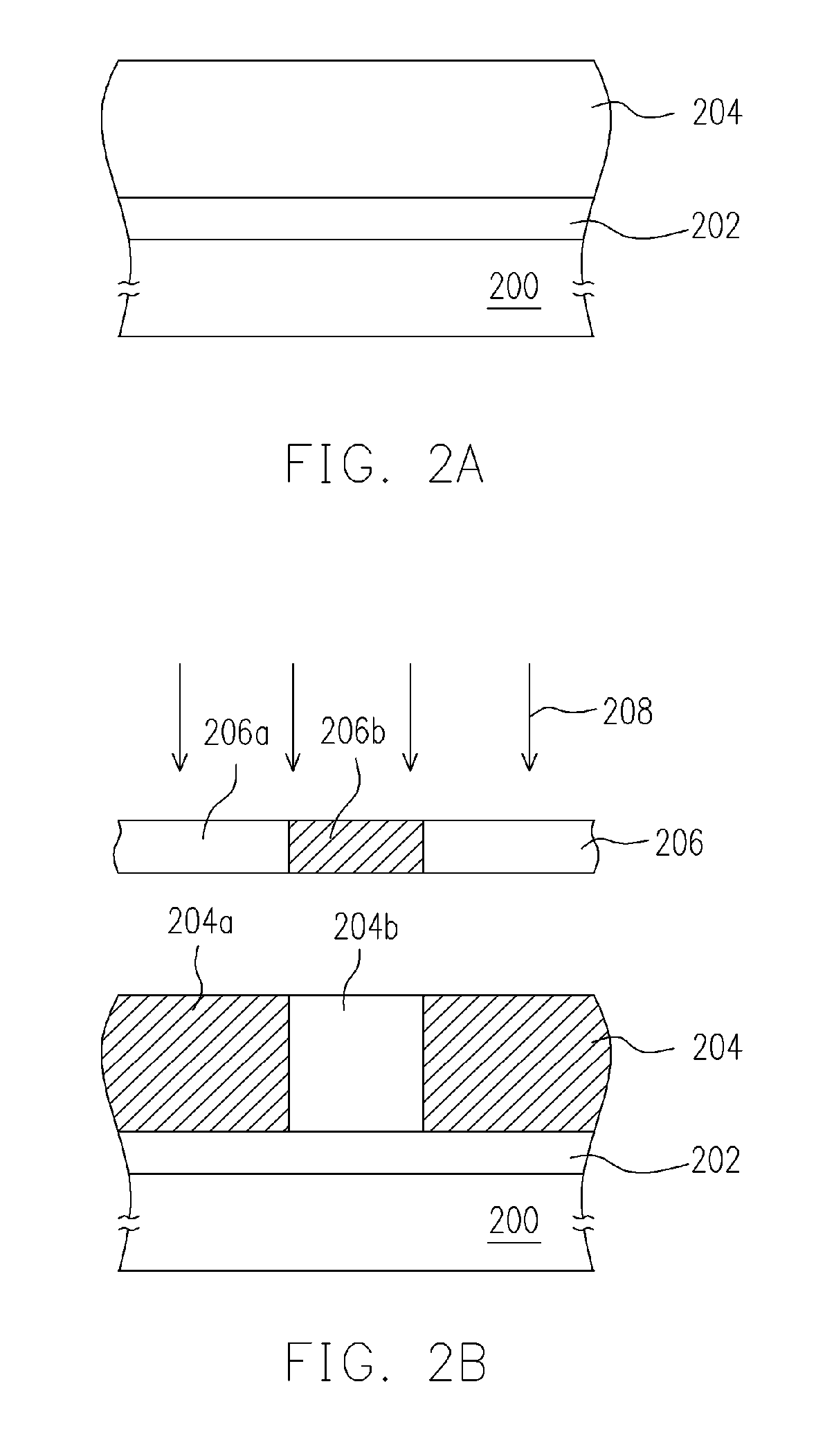Method for forming photoresist pattern and method for triming photoresist pattern
a photoresist pattern and pattern technology, applied in the field of photolithographic process, can solve the problems of poor resolution of the pattern transferred onto the photoresist layer, the difficulty of controlling the preciseness and uniformity of critical dimensions during the photolithographic process, and the uneven profile and rough surface of the patterned photoresist layer, etc., to achieve the effect of improving the smoothness of the profile and making the pattern of the photoresist layer more precis
- Summary
- Abstract
- Description
- Claims
- Application Information
AI Technical Summary
Benefits of technology
Problems solved by technology
Method used
Image
Examples
Embodiment Construction
[0021] A method for forming a photoresist pattern including a method for trimming a pattern of a patterned photoresist layer according to this invention is shown in FIGS. 2A to 2D. Referring to 2A, a material layer 202 is formed over the substrate 200, while the material layer 202 can be a conductive or non-conductive layer. Wherein, the conductive layer is made of, for example, metal or polycrystalline silicon, while the non-conductive layer is made of, for example, silicon nitride, silicon oxide, or other dielectric material. A photoresist layer 204 is then formed over the material layer 202, wherein the photoresist layer 204 is made of, for example, a sensitive material as a mixture of a resin, sensitizer and solvent. The photoresist layer 204 is formed via a process including the steps of, for example, performing spin coating the sensitive material on the material layer 202, and then performing soft baking to remove the solvent in the sensitive material and to make the sensitive...
PUM
| Property | Measurement | Unit |
|---|---|---|
| pH | aaaaa | aaaaa |
| sizes | aaaaa | aaaaa |
| energy | aaaaa | aaaaa |
Abstract
Description
Claims
Application Information
 Login to View More
Login to View More - R&D
- Intellectual Property
- Life Sciences
- Materials
- Tech Scout
- Unparalleled Data Quality
- Higher Quality Content
- 60% Fewer Hallucinations
Browse by: Latest US Patents, China's latest patents, Technical Efficacy Thesaurus, Application Domain, Technology Topic, Popular Technical Reports.
© 2025 PatSnap. All rights reserved.Legal|Privacy policy|Modern Slavery Act Transparency Statement|Sitemap|About US| Contact US: help@patsnap.com



